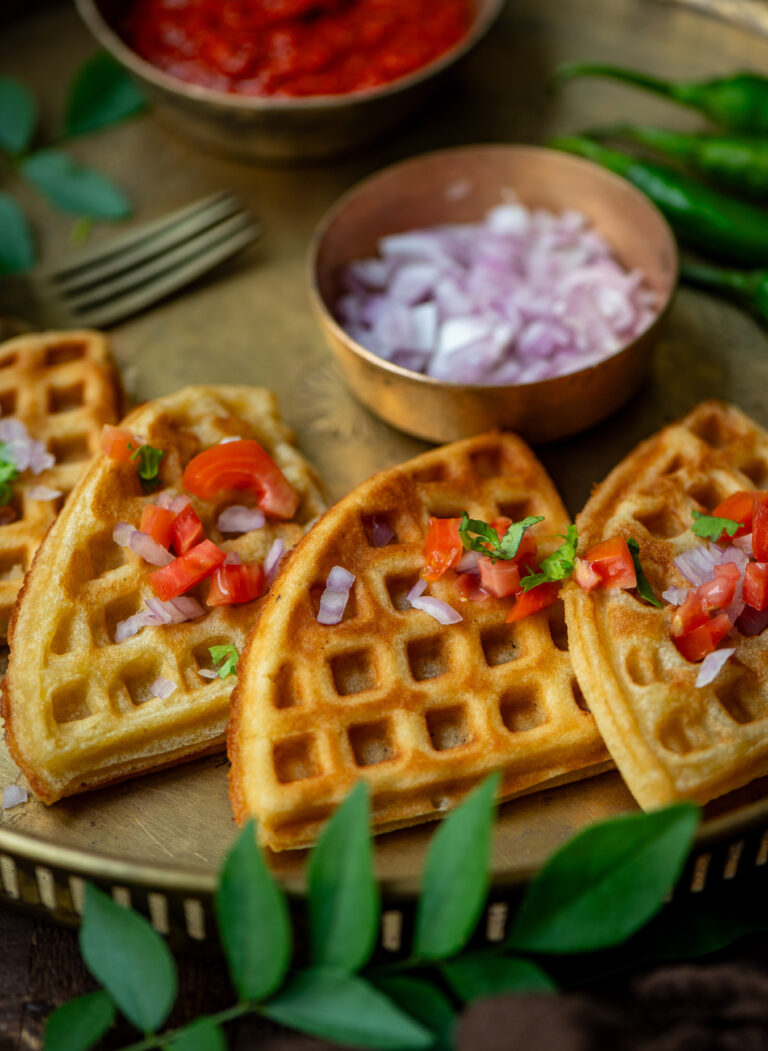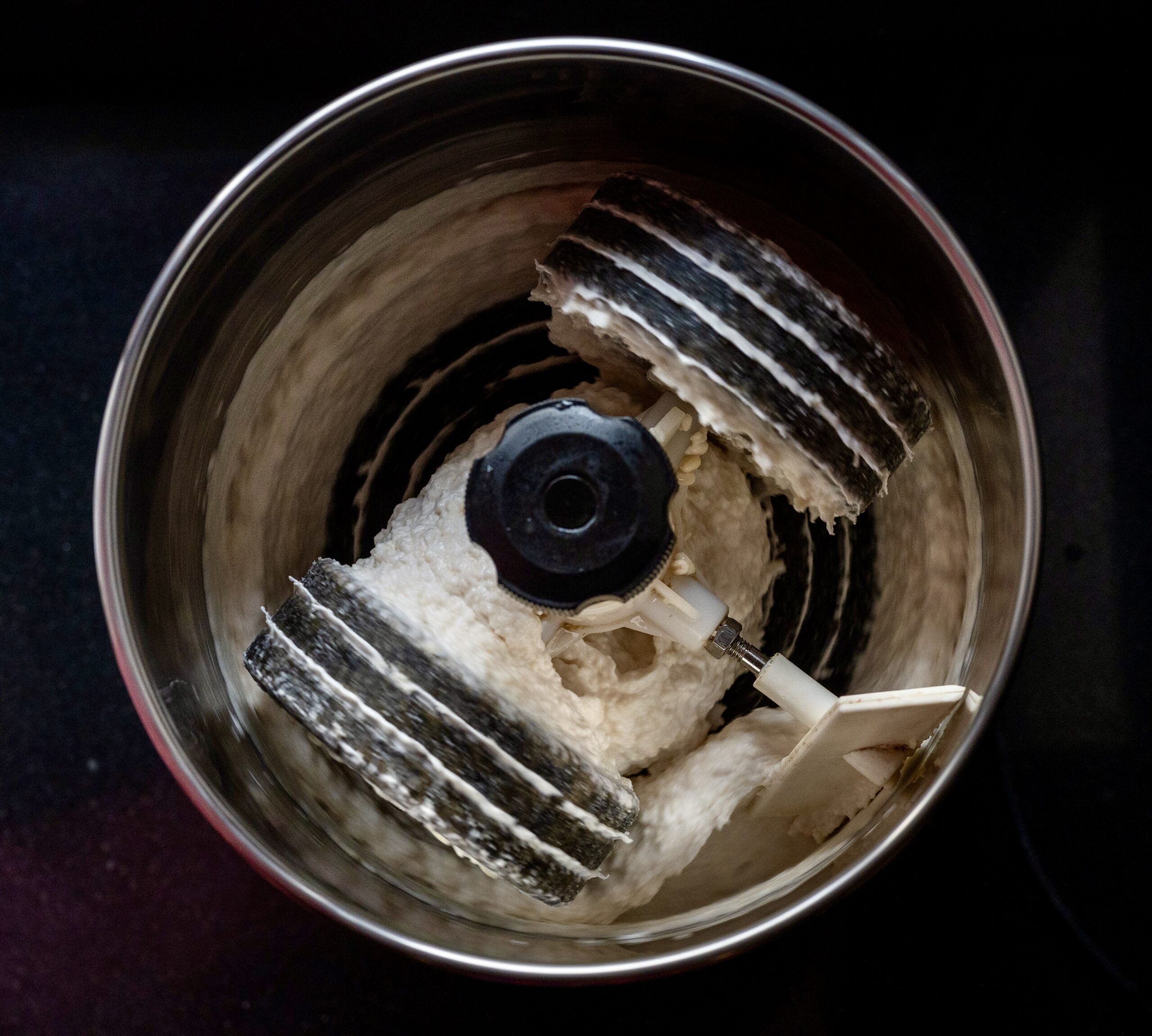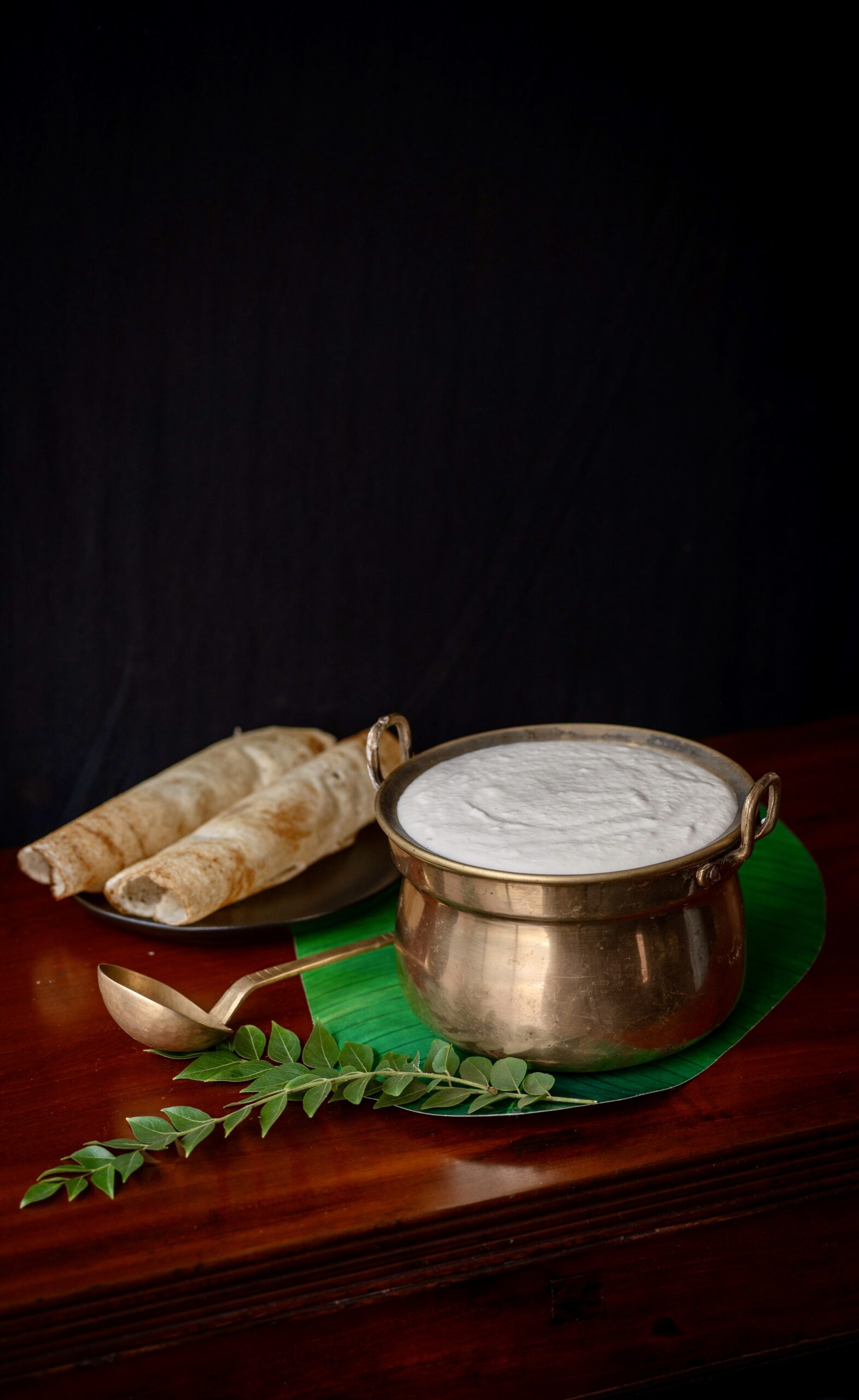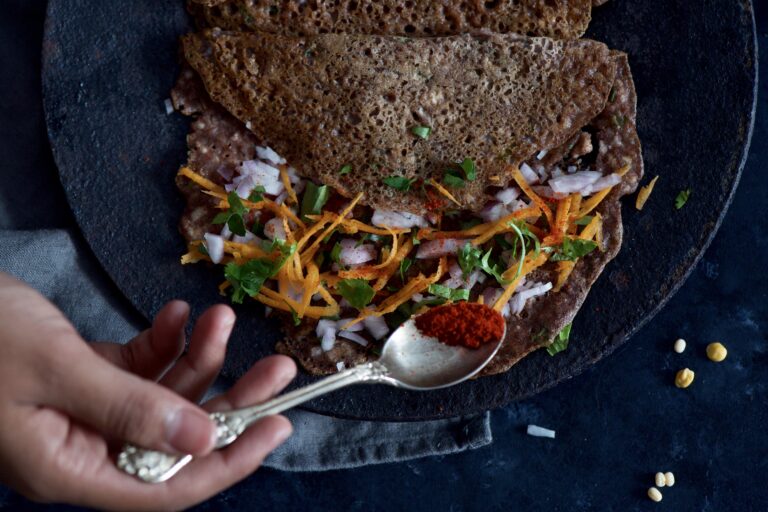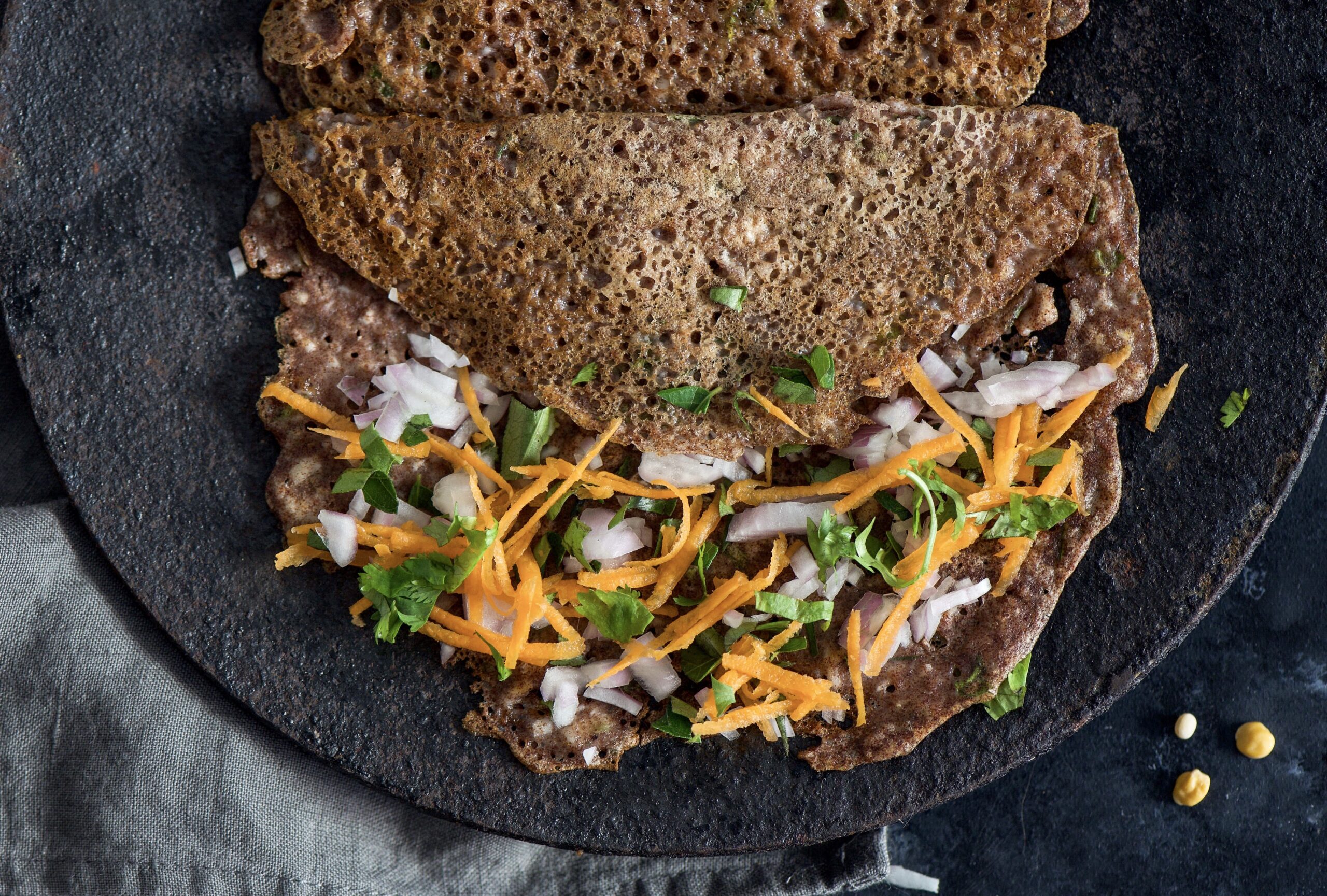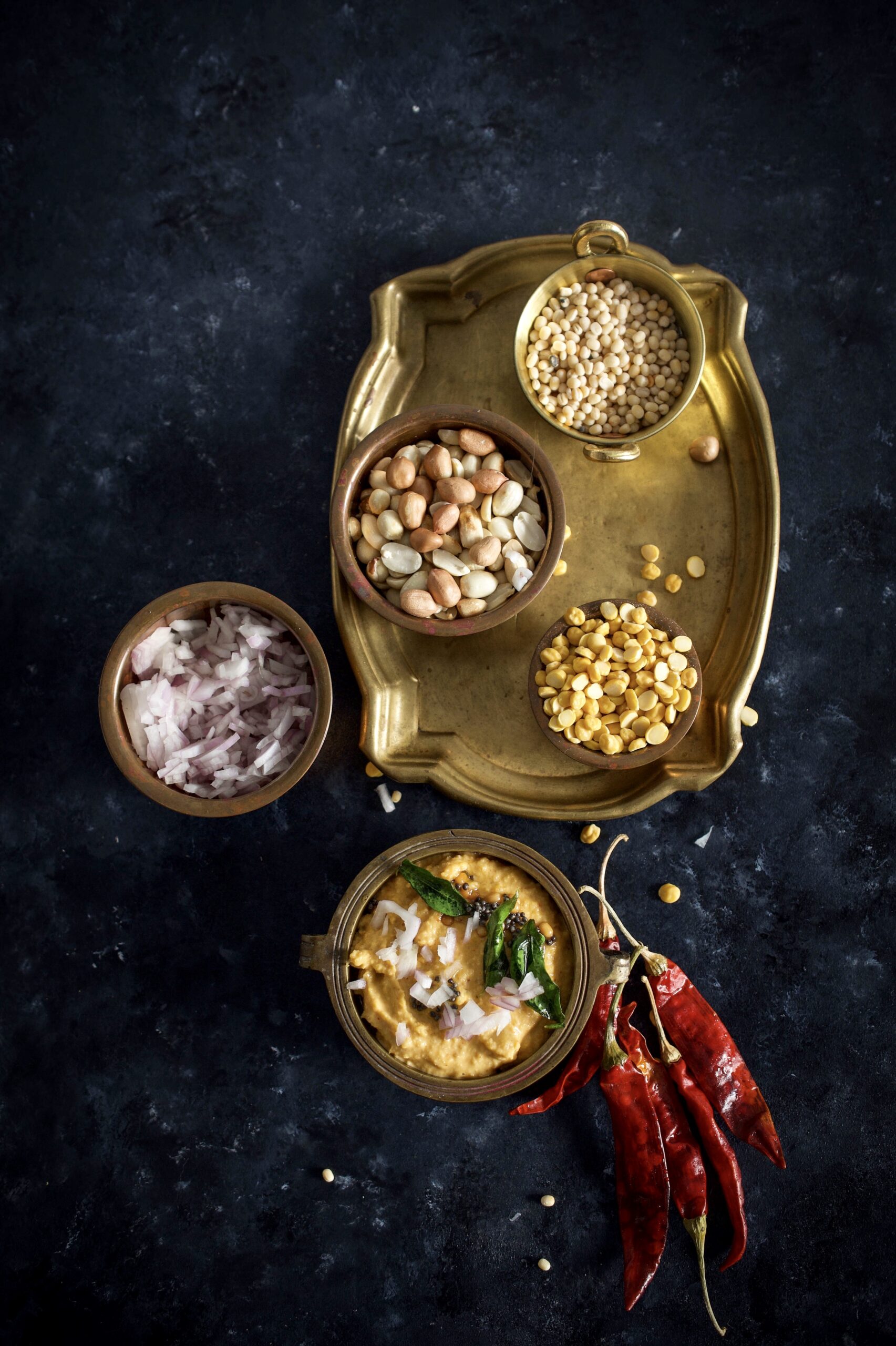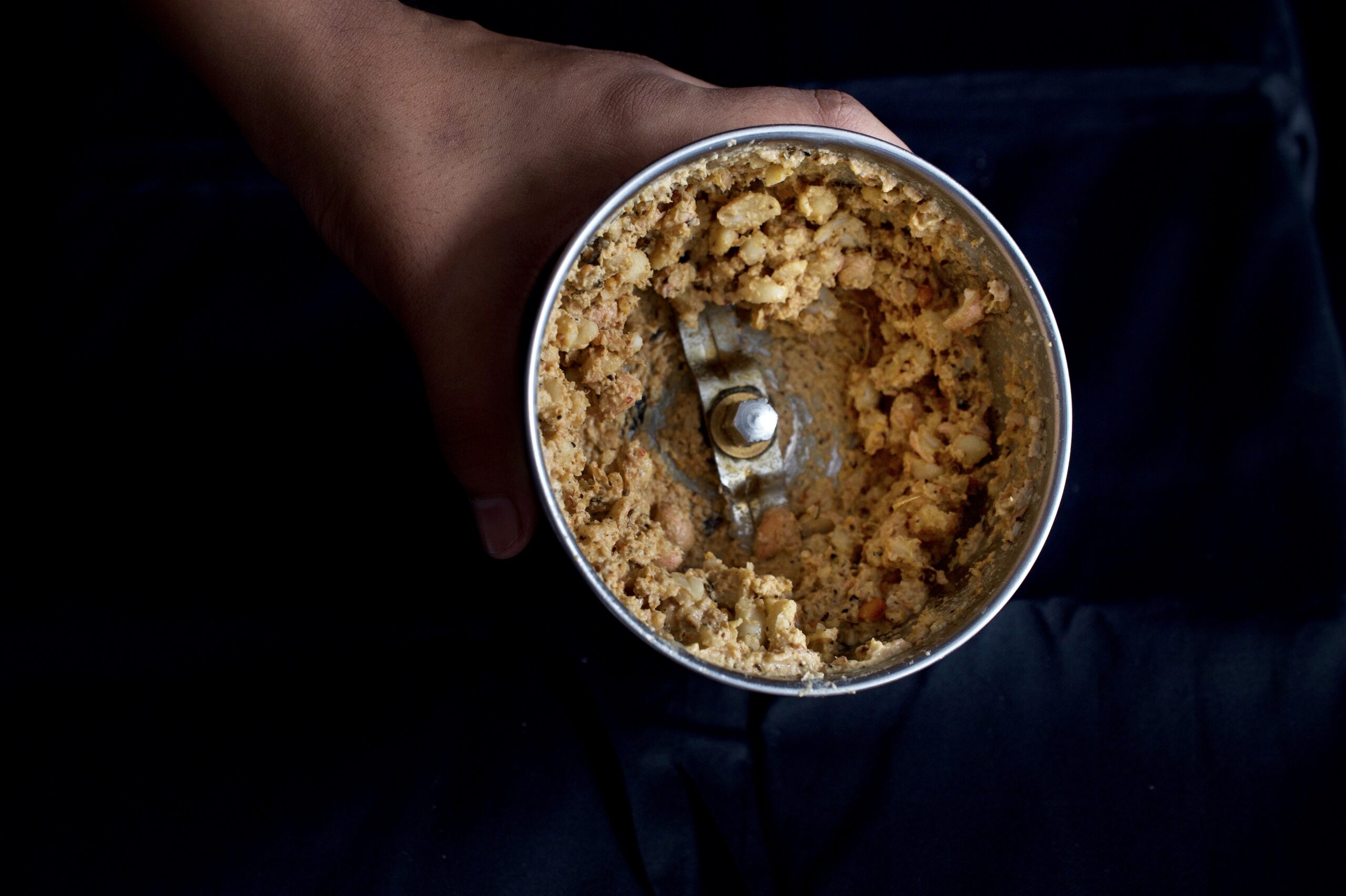We entertain very often at home, or at least we used to – especially when our kids were growing up. With three kids, some friend or the other of theirs would invariably always be around, and I was constantly thinking of what to put on the table that would entice them all to eat well. Some idly and dosa batter, made from scratch as I shared in my previous post, would always be in the fridge, and I discovered many years ago that I could use it innovatively. Most children are attracted to waffles because of their aesthetic, and I found that presenting a dosa with veggies in this form was quite appealing to them. While it was not the sweet treat they were used to, they enjoyed the presentation itself – and dosas of course are always tasty, too.
My last batch of dosa batter, which I prepared for my photoshoot for the previous recipe, inspired me to take my waffle iron out and return to this nostalgic favourite of the family’s. I recalled having made handvo with this device in the past too. I am sure that parents all over the world have similar recipes and tricks to keep their kids intrigued by food, while also eating nutritiously. I have always loaded my dosa waffles up with carrots, coriander and bell peppers, so that there is more goodness in every bite, and still do. They pair with any type of chutney that you would usually consume a regular dosa with, and I have quite a few options among those for you to explore on this blog as well.
I too enjoy how these dosa waffles present themselves, in attractive shapes that are just as good for a bit of novelty for your guests or for yourselves as they are to serve to children. They have started to become a dinner dish for us nowadays too, just for fun.
Speaking of fun, I must confess that I have a weakness for buying gadgets for the kitchen, and often have to control myself when it comes to these appliances. My latest affection has been for a Cuisinart food processor. I may have too many such items, but occasionally one of my now grown-up children will drop by and say “Hey, cool gadget”. Then, I’m happy to give them the device and downsize, knowing that I’ll be contributing to their own kitchens and culinary memories. I fondly recall how the time when I first acquired a waffle iron was very exciting for me, and I enjoyed how it also doubles up as a sandwich maker. Then, I learnt it can make quirky dosas too!
While I share below a simple recipe for how I make dosa waffles, remember that you can experiment with ingredients of your choice. I think that if they are spiced right, they can even replace teatime sandwiches. They’re just as good for breakfast. And of course, I know for a fact that they are perfect to put in children’s lunchboxes to send them off to school with!
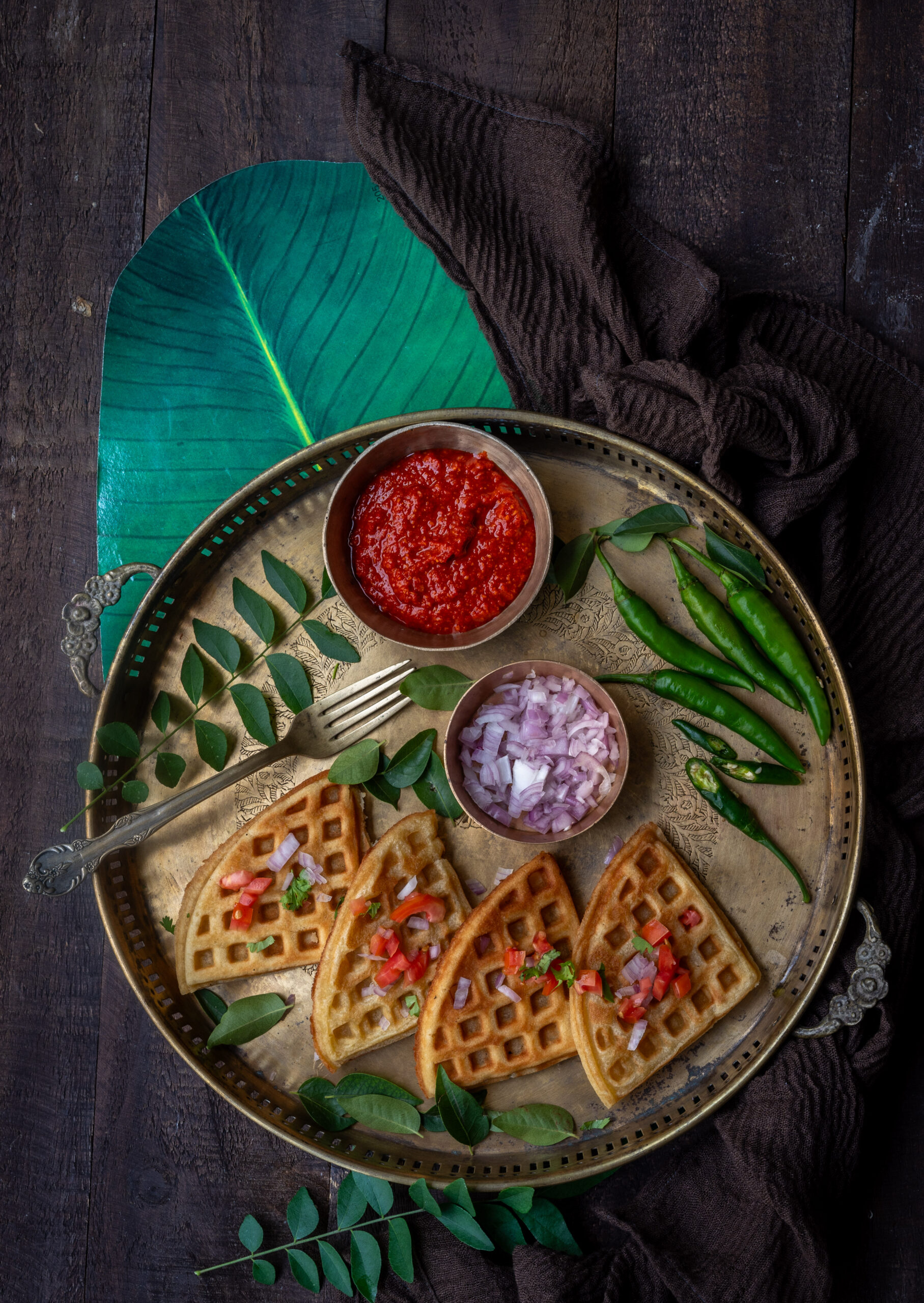
Dosa Waffles
(Serves 5)
4 cups dosa batter
½ cup grated carrots
2 tablespoons coriander leaves (finely chopped)
¼ cup chopped onions
A pinch of salt
1 green chilli (finely cut)
2 tablespoons green bell peppers (finely cut)
1 tablespoon oil
In a bowl, add all the ingredients and mix well.
Heat a waffle iron and drop a ladle full of batter in each section. The batter will spread. Use the waffle iron as per manufacturer instructions. Close gently.
Cook until golden. Serve your dosa waffles hot, with a chutney of your choice.
I hope the look of the waffles brings novelty to your mealtimes and brings a dash of innovation to your daily dosas!

